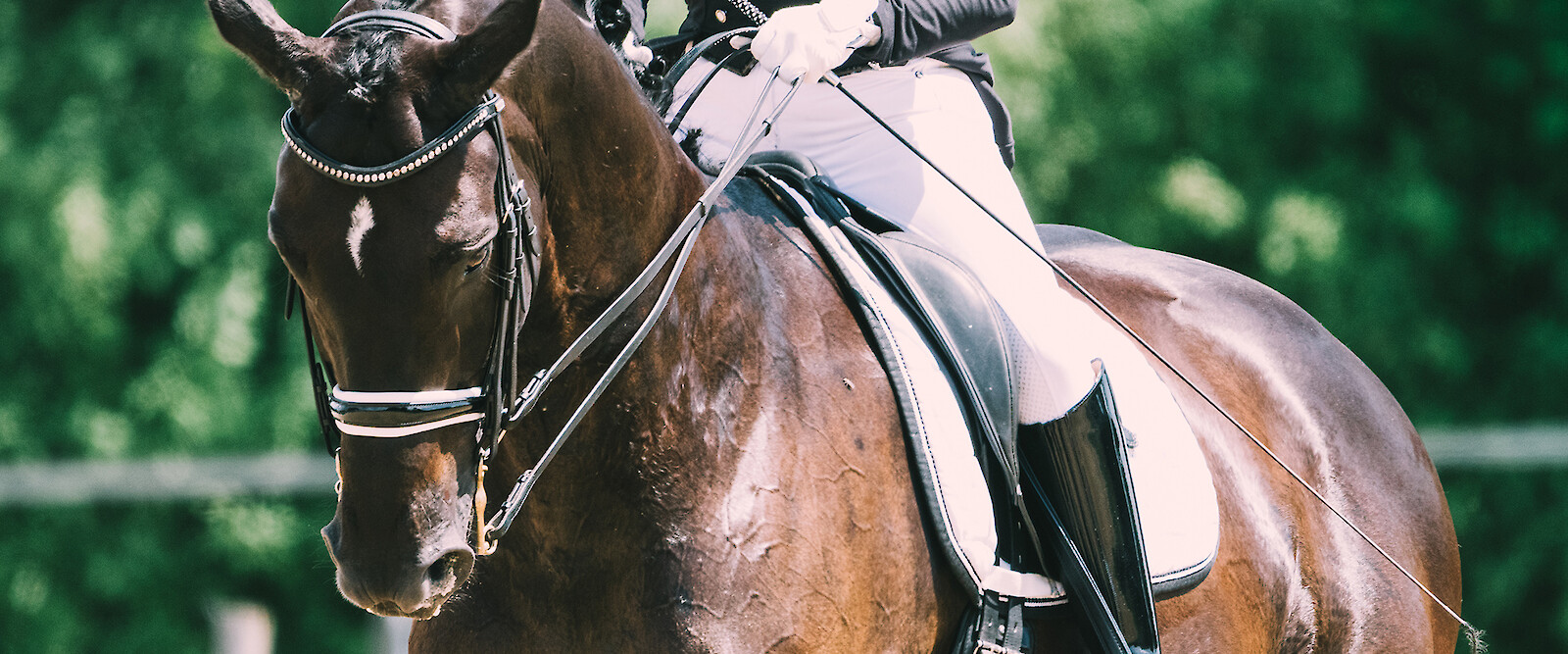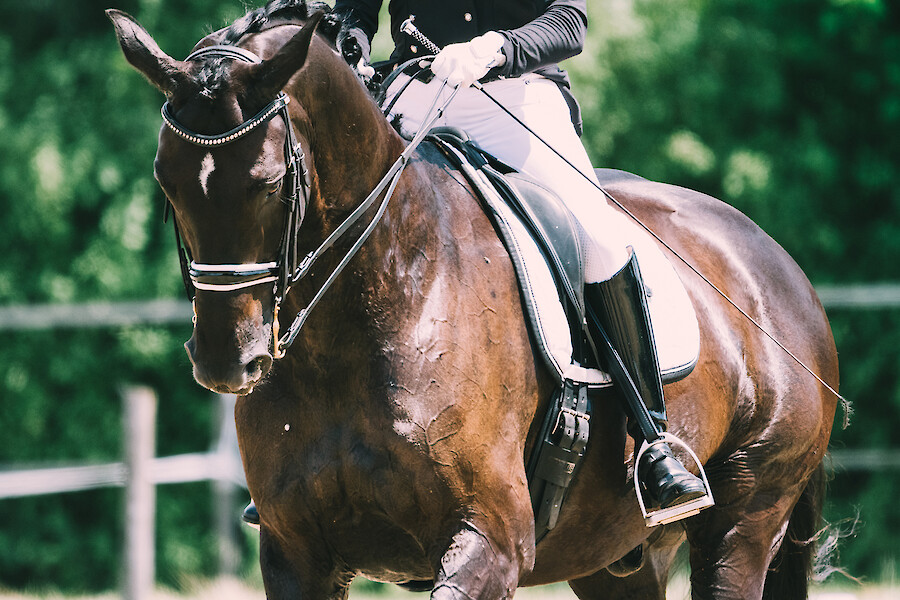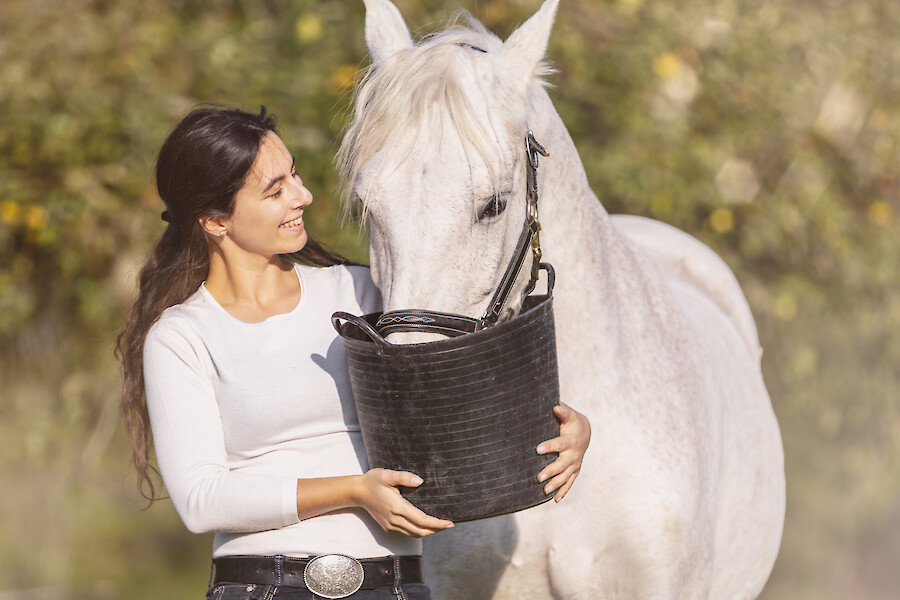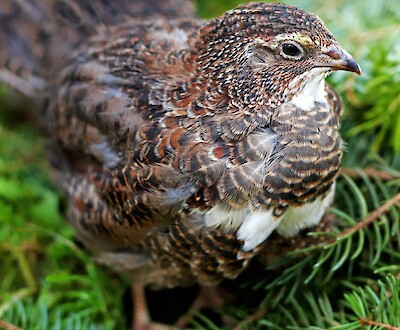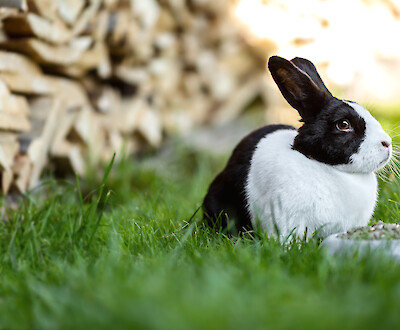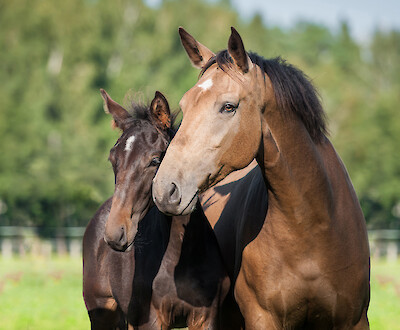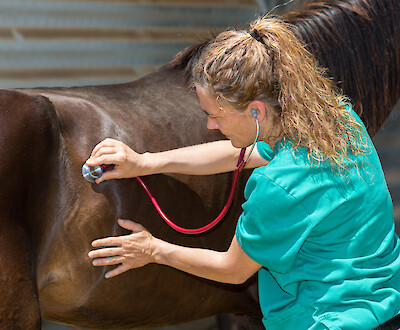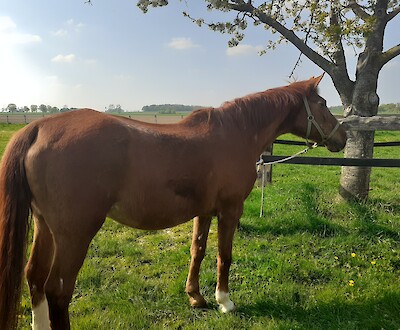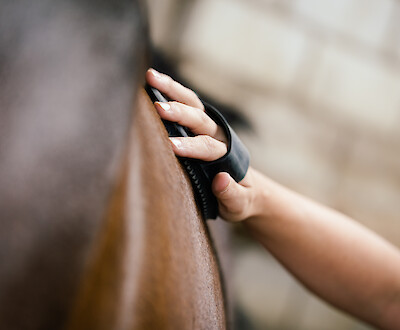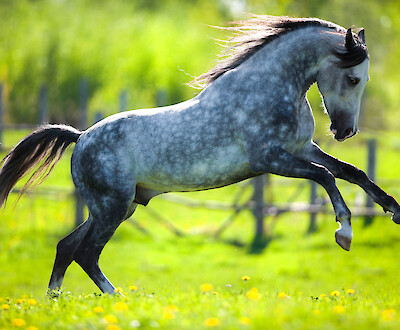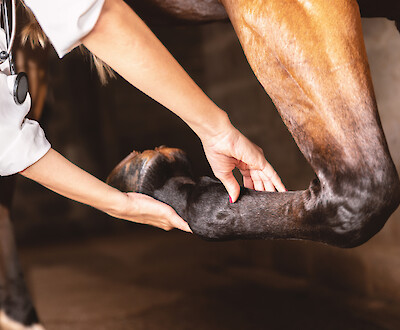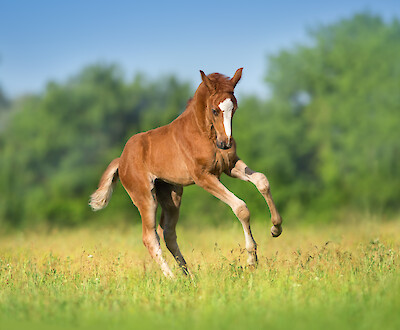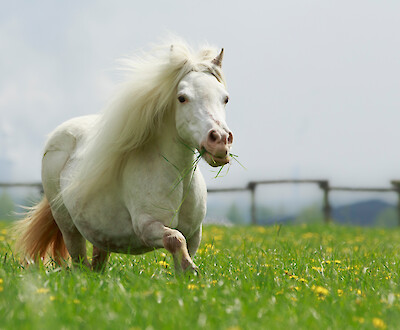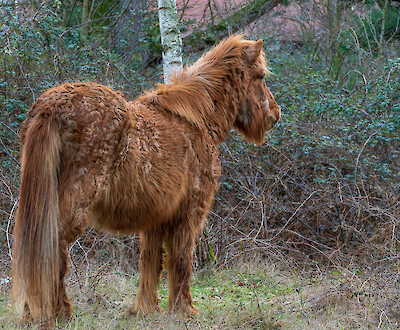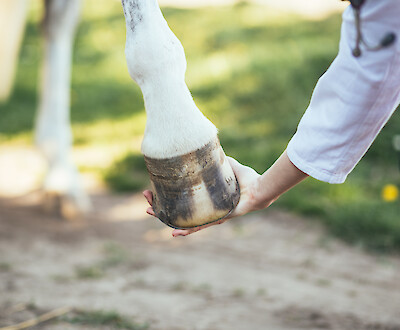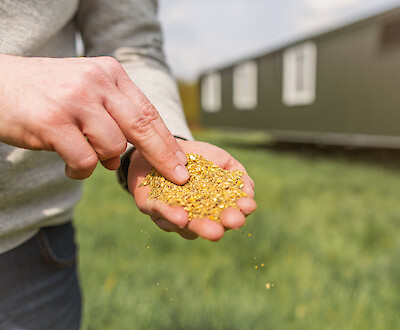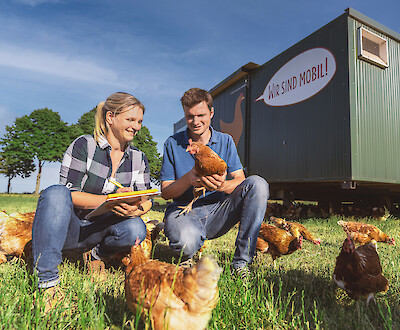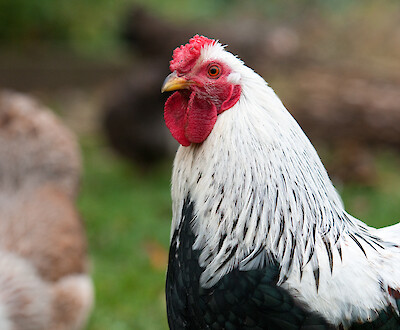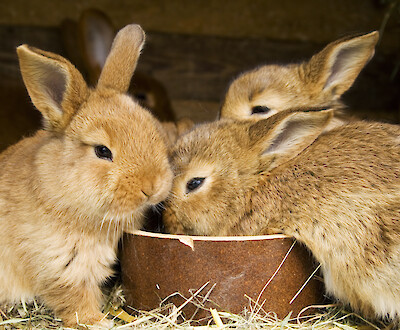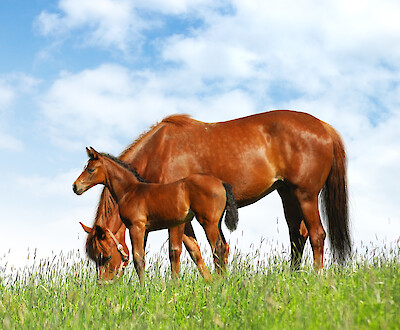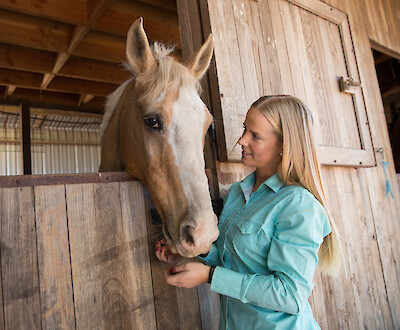Optimal feeding of sporty active horses
Feeding sport horses high in starch and energy
Active horses are particularly stressed. This applies to performance-oriented racehorses and show jumpers as well as to leisure horses with show ambitions. Fast movements and high jumps: For this, the animals need an extra portion of energy. This is the only way they can deliver full performance at the right moment and give their best at tournaments. Horse feeds rich in starch are the key here. But only those who also pay attention to feeding all the important nutrients in line with requirements can ensure a reliable supply.
Compared to leisure horses, horses in competition and competitive sports have a higher demand for nutrients (e.g. protein and vitamins). The need for energy is particularly high in sport horses and active recreational horses. The intensity of the sporting activity, rather than the type of sport practiced (e.g. show jumping or dressage), determines the animals' additional requirements.
More energy in the feed for success in equestrian sport
With increasing activity, energy requirements quickly exceed the amounts available to horses through the usual feed rations. A supply of roughage alone is then not sufficient. If not enough energy is supplied with the feed, horses melt down body reserves (e.g. muscle and fat) to meet their needs. If sport horse owners react too hesitantly at this point, performance losses can quickly occur.
To meet the increased energy needs of horses, horse owners have three options:
- Starchy concentrated feed
- Highly digestible roughage
- Energy dense ration
Starchy concentrated feed
Highly digestible concentrates with a high starch content can be used to make horse feed energy-rich. Such feeds contain starch-rich components such as corn or barley, which have also been specially treated and are therefore particularly digestible. This is achieved with the aid of modern processes such as the patented opticon® technology (see info box). Using pressure and heat, the starch contained in corn and barley is highly broken down, making it more accessible during digestion. Modern crib feeds such as deukavallo Top InForm thus enable simple, high-energy and particularly digestible feeding of active horses.
Various muesli feeds (e.g. deukavallo Top Mix or Horse Menue E) are also available for high-energy feeding of sport horses. Corn or barley are also used here. To ensure that horses absorb the starch well, the two cereals are also hydrothermally treated during production. However, during this "flaking" process, the end product of which is light, digestible feed flakes, the starch is not broken down as effectively as in the production of pelleted sports horse feeds.
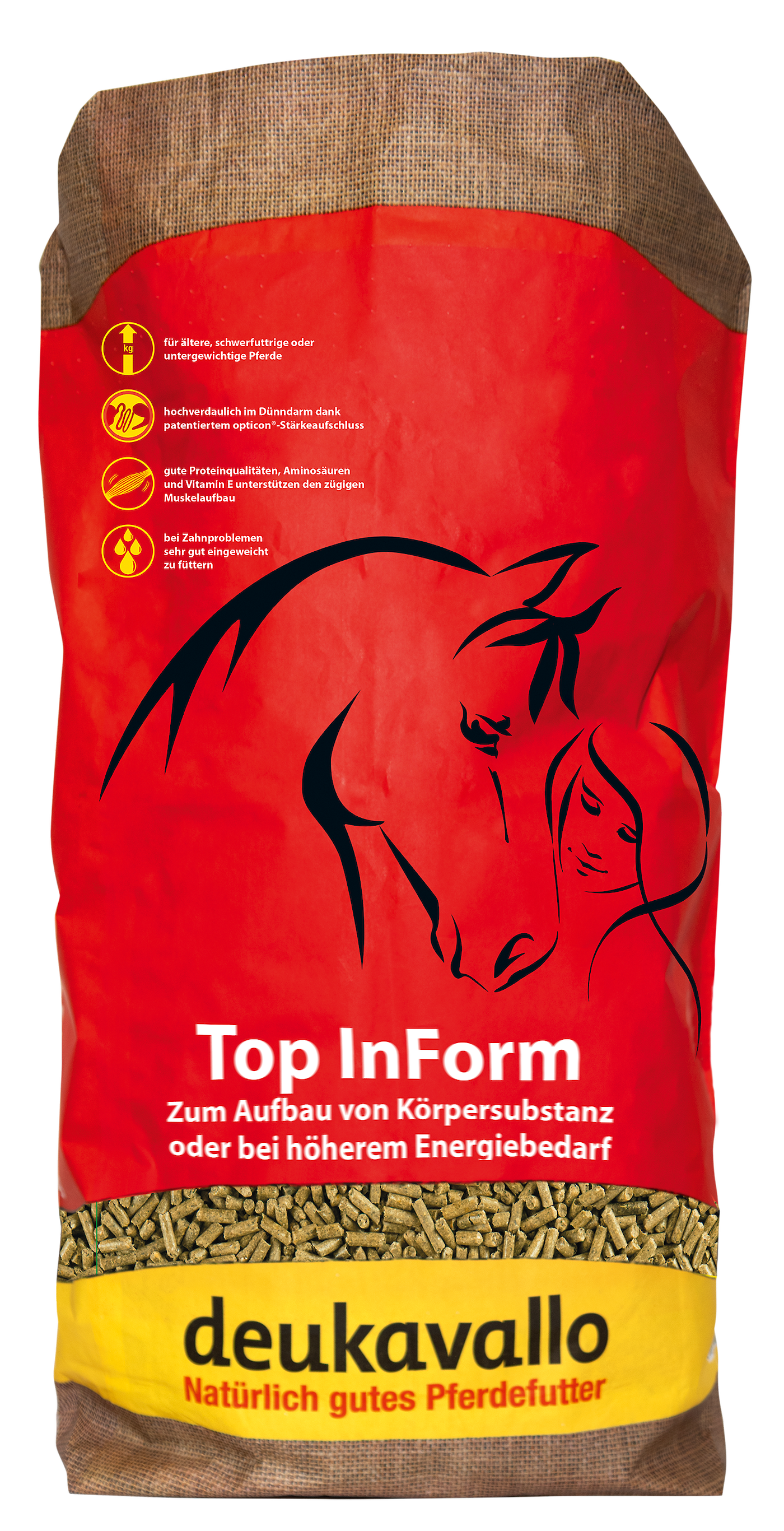
Highly digestible roughage
Whether a leisure horse or a sport horse, high-quality roughage (e.g. hay) forms the basis of the ration for all of them. Horses can easily eat 1.5 kilograms per 100 kilograms of body mass per day without their performance suffering. Even higher amounts are possible if the forage quality is high. For this purpose, hay from the early bloom of grasses (preferably from the 1st cut) should be preferred. For performance horses, hay should contain more than 20 percent and less than 28 percent crude fiber. This should consist of high-quality, stalk-rich, well-dried and dust-free grass hay.
But proper feed management is also important. Always feed roughage first and about 15 minutes after concentrates. This allows the horse to form sufficient saliva. Well-salivated concentrated feed passes through the digestive tract particularly smoothly. In addition, pace the feeding well and distribute the daily ration over several, smaller meals - after all, horses have small stomachs. Otherwise, excessive feeding can easily lead to stomach overload.
Energy density ration
Feeding energy-dense cereals
Cereals, cereal mixtures or concentrates (e.g. muesli or pellets) can be used to effectively increase the energy density of the ration. The carbohydrates contained in grains in the form of starch serve as an energy source for horses. Corn or barley are the most common grains used in this context.
Even though grains are a good source of starch, they cannot be fed in arbitrary amounts. Excessive amounts of grains in the ration can cause improper fermentation in the large intestine. This is because the starch structure of some cereals is difficult for the enzymes in the small intestine to "crack". It is therefore easy for starch to enter the appendix undigested. If the amount is too large, the digestive tract cannot process it; in the worst case, it causes serious damage.
Some horse owners therefore resort to oats. Among the cereals, oats are the easiest to digest. It also contains unsaturated fatty acids and high quality protein. However, on some horses, oats become unintentionally invigorating. If their horses are literally "stung by oats," owners should reconsider their choice of feed.
Oils and fats, oilseeds and oilseed residues, and legumes as alternative energy sources
More and more horse feeds contain oils and fats that replace starch as an energy source. This is no accident: after all, each gram of fat has twice as much energy as a gram of starch. However, oils and fats are also used to supplement the ration. They are particularly useful where the horse's fiber intake capacity is exhausted. In this way, the amount and volume of feed can be reduced, the associated filling of the digestive tract reduced and the energy content of the ration increased. However, depending on feeding habits, acceptance among horses varies widely.
Furthermore, fats and oils (e.g. contained in deukavallo Leinvital) are sources of omega-3 fatty acids. These belong to the so-called "essential fatty acids" - vital components - which horses must take in through their feed. Omega-3 fatty acids have an anti-inflammatory effect, support cell renewal and contribute to a healthy stomach and intestinal mucosa and intact skin function.
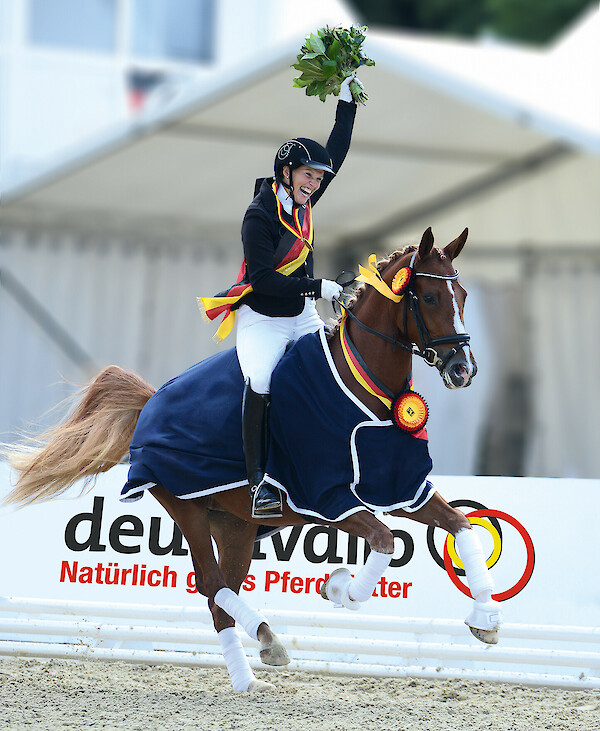
High-tech in horse feeding: starch digestion with opticon®
The digestive system of horses cannot optimally process the starch of some cereals. Only a special treatment during feed production makes the nutrients and energy of the forage plants optimally accessible to the animals. A modern process used for this purpose is the opticon® process from Deutsche Tiernahrung Cremer. This is a pressure hydrothermal process that uses pressure and heat to "loosen up" the starch structure of cereals such as corn and barley. This makes it easier for the digestive enzymes in the horses' small intestines to process the starch energy. The cereal starch can thus be digested almost completely. In modern concentrated feeds (e.g. deukavallo Top InForm), the degree of digestion is over 76 percent.
Sport horses need more protein - but please not too much
Sport horses have an increased need for high-quality protein (syn. protein) and thus for vital, essential amino acids. The body cannot store protein well compared to carbohydrates and fats. In addition, a continuous breakdown of body proteins takes place every day. Therefore, horses - just like humans - need to consume protein regularly in sufficient quantities with their food. The muscles of sport horses in particular are under a lot of strain. A sufficient amount of protein and essential amino acids in the feed can prevent the breakdown of body substance.
The quality of protein, not the quantity, is the decisive factor. The motto "a lot helps a lot" does not apply here. After all, horses have to excrete excess protein in a cumbersome way. Thus, an excess of protein severely limits the performance of horses by unnecessarily stressing the metabolism.
Amino acids are the building blocks of proteins and play a major role in building and maintaining body substance. lysine, methionine and threonine in particular are involved in important building processes in the body. They belong to the so-called essential amino acids. This means that the body cannot produce them itself and they must be ingested with food instead. The amino acid requirements of the sport horse cannot be covered by the daily amount of hay. Especially in the case of particularly stressed sport horses with a high requirement, horse owners should ideally provide them additionally via supplementary feed or mineral feed (e.g. deukavallo Mineral).
Increased mineral and vitamin requirements in sport horses
The supply of sufficient micronutrients (e.g. vitamins and minerals) also plays an important role in the feeding of sport horses. The following in particular are essential for a performance-appropriate supply:
-
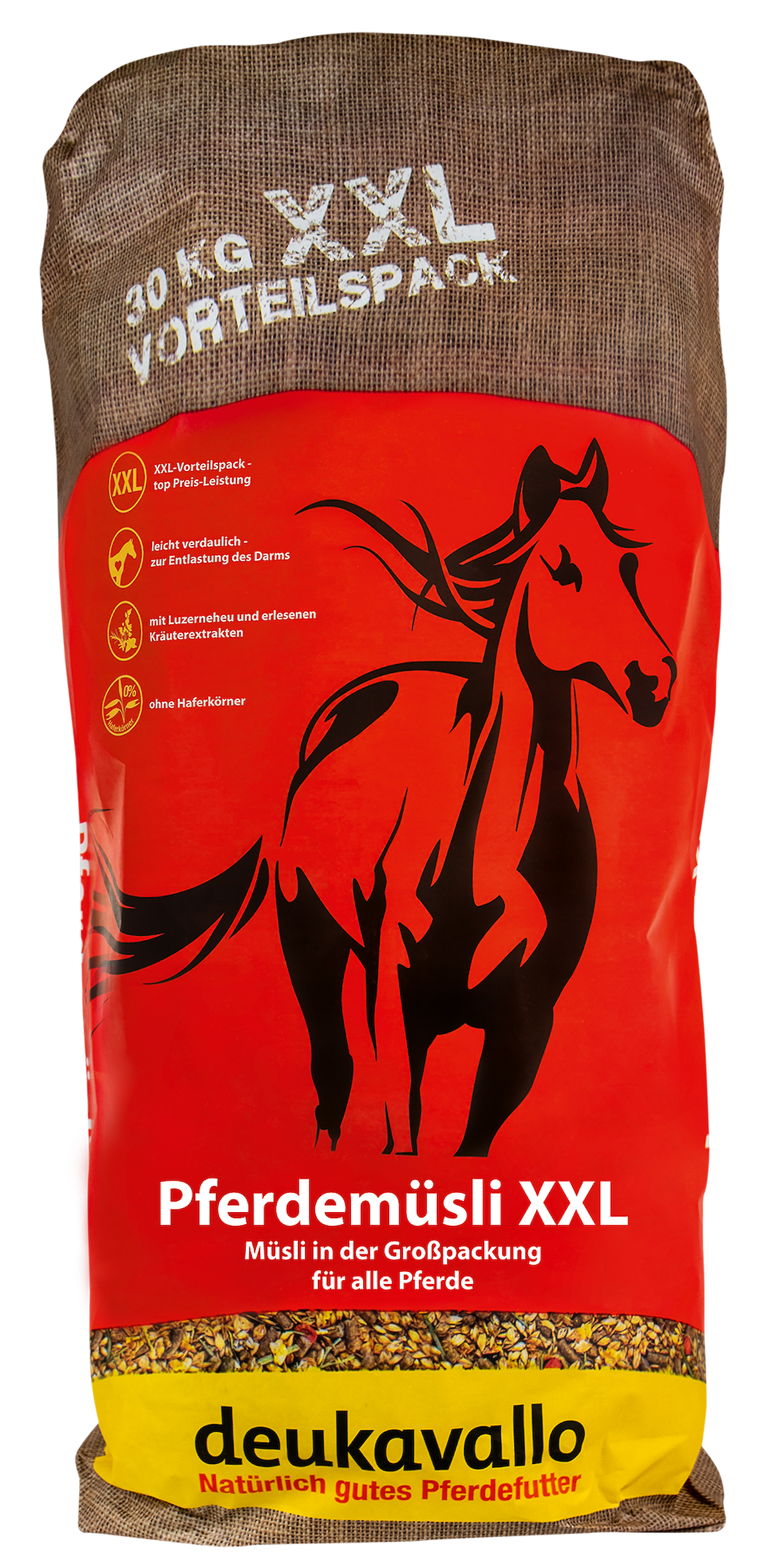
Feeding supplementary feeds containing selenium, such as deukavallo Pferdemüsli XXL, can prevent muscular problems (© Deutsche Tiernahrung Cremer). Selenium
Among the trace elements, selenium is particularly relevant. The trace element is involved in the horse's muscle metabolism and is a component of an endogenous enzyme that breaks down toxic oxygen compounds - so-called free radicals. In this way, it helps to protect tissue from damage. A selenium deficiency in horses is accompanied by a decline in performance. This must be prevented at all costs, especially in sport horses.
Unfortunately, many soils in Germany are poor in selenium. For this reason, the trace element is only present in small quantities in the roughage in many regions. Supplementary feeding with selenium-containing feed supplements (e.g. deukavallo Zuchtmüsli, Strukturmüsli, Pferdemüsli XXL, Apfel-Cornmüsli, Top InForm) or mineral feeds is therefore recommended to prevent muscle problems. The selenium requirement of a sport horse is 0.15 milligrams per kilogram0.75 feed in dry matter.
-
Vitamin E
Particularly during intensive sporting activities, large quantities of free radicals are produced. These are aggressive organic compounds that can impair metabolic processes and damage cells. The presence of free radicals results in an increased need for vitamin E. This is sometimes increased by a factor of two or three. This is sometimes increased by a factor of two or three. However, it is difficult to determine the specific vitamin E requirement of horses - the value depends on too many factors. However, the basic requirement is at least 100 milligrams per 100 kilograms of ideal body weight per day.
The horse's body cannot produce vitamin E itself. Although pasture grass contains fat-soluble vitamins, including vitamin E, it cannot meet the high requirements of sport horses. Owners of sport horses should therefore pay attention to an appropriate vitamin E content in their feed throughout the year. A sufficient supply protects the cells from damage by free radicals. An undersupply of vitamin E can therefore also lead to tissue damage in the muscles. As a result, the horse's performance decreases and body substance is lost.
-
Magnesium
Horse shows can be stressful. A horse that remains calm now increases its chances of a place on the podium. For restless sport horses, it sometimes helps to check the amount of magnesium in the feed. It is not without reason that magnesium is said to have a calming effect: A sufficient amount lowers the excitability of muscles and nerves. In contrast, horses with a magnesium deficiency are described as being particularly jumpy. The daily maintenance requirement of a 500-kilogram horse is 5.6 grams per 100 kilograms of live weight. The levels of magnesium lost through sweat are low. The additional requirement is covered by the feed. In the case of particularly high activity, additional administration via mineral feed (e.g. deukavallo Mineral) is advisable.
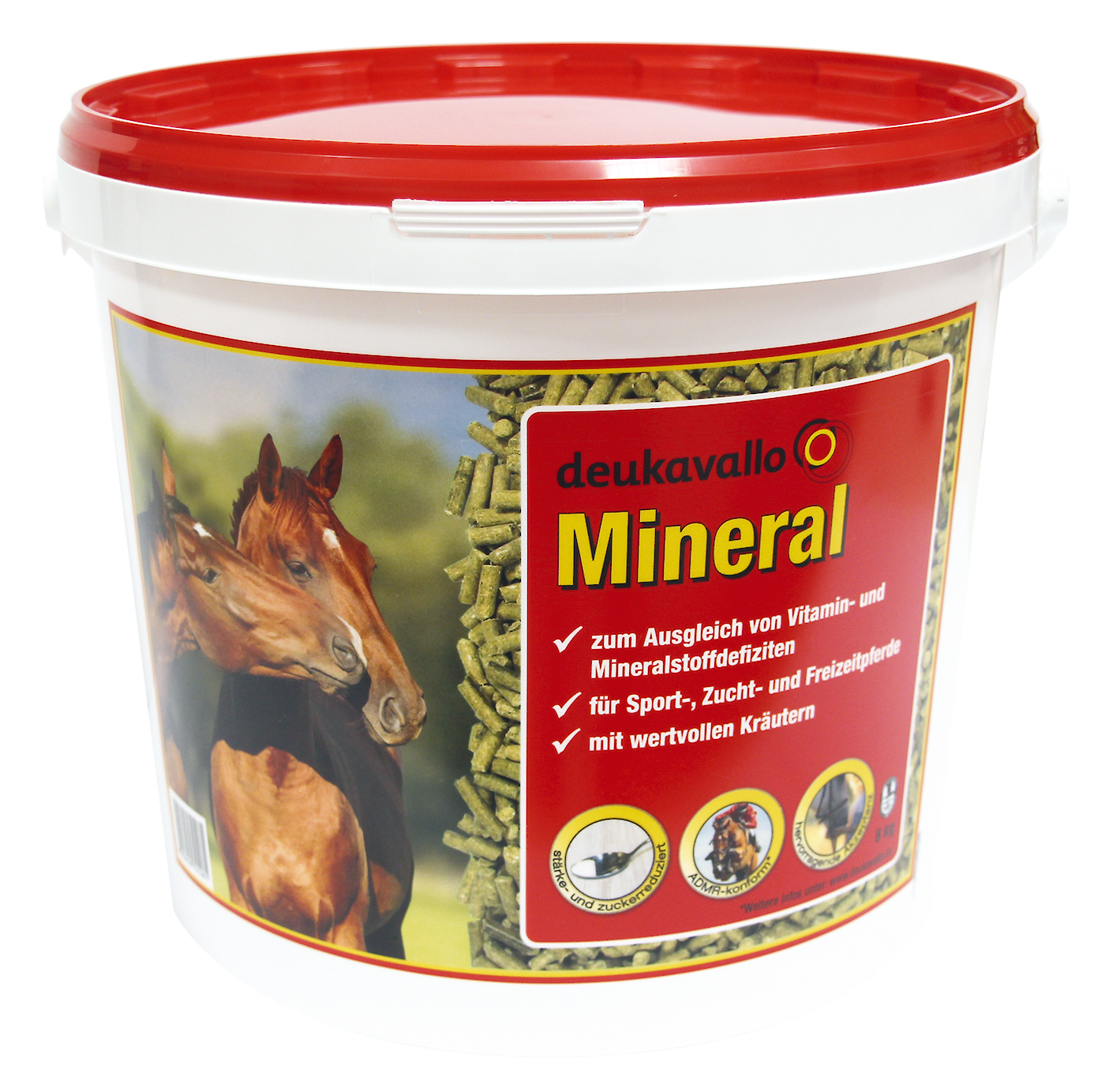
To meet the magnesium requirements of sport horses, an additional administration of mineral feeds such as deukavallo Mineral is useful (© Deutsche Tiernahrung Cremer). -
Sodium
Sodium (syn. table salt) is vital for cell function. For this reason, horses must take it in regularly with their food. This applies to an even greater extent to sport horses. This is because sodium is lost from the body during sweating, for example - and athletic horses sweat particularly heavily. The electrolyte concentrations in sweat are subject to large fluctuations. It depends on the duration of the load, the recovery times and the training condition as well as the breed and feed type. Depending on the load, make sure that your horse has a sufficient salt intake, for example with the help of a salt lick.
Conclusion
- Sport horses and active leisure horses have an increased need for protein, vitamins, minerals and especially energy.
- To meet these needs, equestrians must increase the amount of energy in their rations. Feeding starch-rich, highly digestible concentrated feeds (e.g. deukavallo Top InForm) is particularly suitable.
- Above all, use feeds in which the cereal starch has been "broken down" using modern processes and is therefore particularly easy to digest.
- Ensure the increased protein requirement by feeding the vital, essential amino acids lysine, methionine and threonine with the aid of appropriate feed supplements or mineral feed (e.g. deukavallo Mineral).
- In addition, ensure a sufficient supply of selenium, sodium, vitamin E and magnesium in line with the animal's requirements.
Image sources: © Christian Schwier - stock.adobe.com
Contact person

Theresa Oesterwind
Contact person

